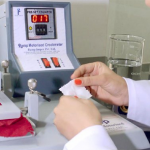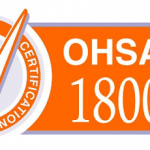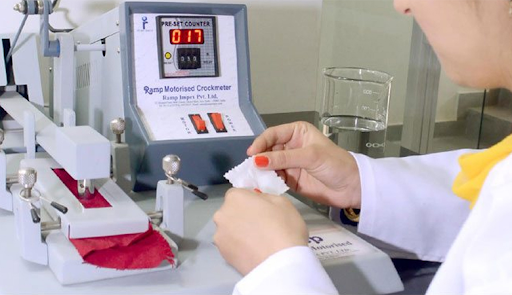
Introduction:
Preparing for an ISO certification audit can be a daunting task, but with proper planning and implementation, it becomes an opportunity to showcase your organization’s commitment to quality and excellence. Achieving an ISO certification demonstrates that your company meets international standards and adheres to industry best practices. In this blog post, we will explore essential tips and best practices to help you navigate through the audit process successfully. From streamlining processes to improving documentation and demonstrating compliance, we’ll cover everything you need to know to ace your ISO certification audit.
Selecting the Right ISO Standard
One of the first steps in preparing for an ISO certification audit is to choose the right ISO standard for your organization. There are several ISO standards available, each catering to specific areas of management. For example, ISO 9001 focuses on quality management systems, ISO 14001 certification on environmental management, and ISO 27001 certification on information security management.

Conduct a thorough assessment of your organization’s needs, industry requirements, and customer expectations to determine which ISO standard aligns best with your goals. Consider consulting with experts or engaging professional services to help you make an informed decision.
Developing a Project Plan
Once you have selected the appropriate ISO standard, it’s time to develop a comprehensive project plan. The project plan will serve as a roadmap for your ISO certification journey, outlining the tasks, timelines, and responsibilities associated with the audit process. Here are some key elements to consider when creating your project plan:
Define Objectives:
Clearly state the objectives you want to achieve through ISO certification. These may include improving customer satisfaction, enhancing operational efficiency, or expanding market opportunitiy.
Assign Responsibilities:
Identify the team members who will be responsible for different aspects of the certification process. Assign clear roles and ensure everyone understands their responsibilities
.Establish Timelines:
Set realistic deadlines for each milestone in the certification journey. This will help you stay on track and ensure timely completion of tasks.
Allocate Resources:
Determine the resources required for the certification process, including budget, personnel, and technology. Ensure you have sufficient resources to support the implementation of the ISO standard.
Monitor and Review:
Regularly monitor progress and review the project plan to identify any deviations or areas that need adjustment. This will help you address issues proactively and maintain momentum throughout the process.

Conducting a Gap Analysis
A gap analysis is a crucial step in preparing for an ISO certification audit. It involves assessing your current processes, systems, and documentation against the requirements of the chosen ISO standard. The purpose of a gap analysis is to identify areas where your organization falls short of compliance and to develop strategies for bridging those gaps. Here’s how you can conduct an effective gap analysis:
Study the ISO Standard:
Familiarize yourself with the specific requirements of the ISO standard you have chosen. Understand the key elements and determine how they align with your existing practices.
Evaluate Current Processes:
Analyze your organization’s current processes and procedures to identify gaps or deviations from the ISO standard. Look for areas where improvements are needed to meet the standard’s requirements.
Assess Documentation:
Review your documentation, including policies, procedures, work instructions, and records. Ensure they are up-to-date, comprehensive, and aligned with the ISO standard’s documentation requirements.
Identify Corrective Actions:
Based on the findings of the gap analysis, develop an action plan to address the identified gaps. Assign responsibilities, set deadlines, and establish metrics for measuring progress.
Implement Corrective Actions:
Execute the action plan, implementing the necessary changes and improvements to bring your organisation into compliance with the ISO standard.
Remember, the gap analysis is not a one-time activity. Continuously monitor and evaluate your progress, making adjustments as necessary throughout the certification process.
Conducting Internal Audits
Before the actual ISO certification audit, it’s essential to conduct internal audits to assess your organization’s readiness and identify areas for improvement. Internal audits help you identify gaps, verify compliance, and address any issues before the external auditors arrive. Here’s how to conduct effective internal audits:
Define Audit Scope:
Determine the scope of the internal audit, including the processes, departments, and areas to be audited. Focus on critical areas and high-risk processes to ensure comprehensive coverage.
Select Competent Auditors:
Choose auditors who are knowledgeable about the ISO standard and have experience conducting internal audits. Provide them with appropriate training to ensure consistent and reliable auditing.
Plan and Schedule Audits:
Develop an audit plan and schedule, considering the availability of auditors and the impact on daily operations. Communicate the audit schedule to relevant personnel well in advance.
Perform Audits:
Conduct the internal audits according to the defined plan and schedule. Follow a systematic approach, reviewing documentation, interviewing employees, and observing processes. Use checklists and audit tools to ensure thoroughness and consistency.
Report and Correct Findings:
Document audit findings and generate comprehensive reports. Share the results with relevant stakeholders, highlighting areas of non-compliance or improvement opportunities. Develop corrective action plans and track their implementation to address identified issues.

Internal audits serve as a valuable opportunity to fine-tune your processes and documentation before the actual certification audit. It allows you to identify and rectify any gaps, ensuring a smoother external audit experience.
Engaging External Auditors
The final stage of preparing for an ISO certification audit involves engaging external auditors. These auditors, often from an accredited certification body, will assess your organization’s compliance with the chosen ISO standard. Here are some tips to make the most out of the external audit:
Select Accredited Certification Body:
Choose an accredited certification body recognized for its expertise and credibility. Research the available options, review their track record, and consider customer feedback to make an informed decision.
Prepare Documentation:
Organize your documentation in a structured manner, making it easily accessible for the auditors. Ensure that all required documents are available and up-to-date.
Assign Audit Support Personnel:
Designate personnel to assist the auditors during t高仿dior
he on-site audit. These individuals should be familiar with the processes, able to provide necessary information, and support the audit process.
Be Transparent and Honest:
During the audit, be transparent and honest in providing information and answering questions. If there are areas where your organization falls short of compliance, acknowledge them and explain your plans for improvement.
Learn from the Audit:
Treat the external audit as a learning experience. Pay attention to the auditors’ feedback, recommendations, and observations. Use this feedback to continuously improve your processes and enhance your organization’s performance.
By actively engaging with the external auditors, you can establish a positive rapport and demonstrate your commitment to achieving and maintaining ISO compliance.

Conclusion
Preparing for an ISO certification audit requires thorough planning, implementation, and continuous improvement. By following the tips and best practices outlined in this blog post, you can streamline your processes, improve documentation, and demonstrate compliance to the ISO standards. Remember, achieving ISO certification is not just a one-time accomplishment but an ongoing commitment to quality, excellence, and continuous improvement.
Whether you’re embarking on your first ISO certification journey or looking to enhance your existing certification, the key lies in approaching the audit process with expertise, experience, authority, and transparency. By doing so, you’ll not only meet the ISO standard’s requirements but also position your organization as a leader in your industry.




